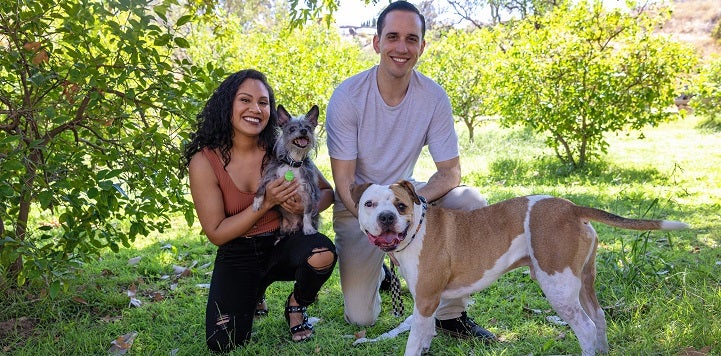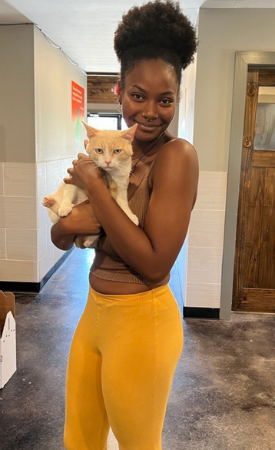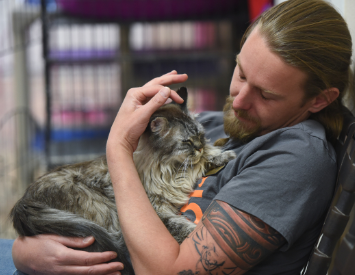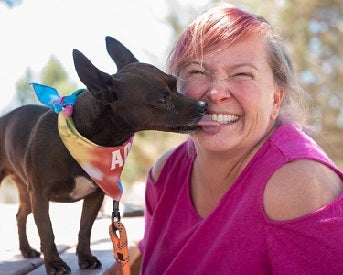
Survey sheds light on factors impacting pet acquisition
A month ago we shared the results of our latest dataset, which (not surprisingly) showed a mix of good and not-as-good news for the industry. 2021 saw an increase in the number of shelters and communities reaching and sustaining no kill. Now, for the first time ever, more than 50% of shelters are no kill which is incredible progress. Delaware and New Hampshire are holding steady as no-kill states, and three more are quickly closing in on the 90% benchmark.
 However, last year’s adoptions didn’t keep pace with the increase in both dog and cat intake and the disparity between dog intakes and dog adoptions has continued into 2022. As a result, we’re all feeling the pressure to find new ways to increase positive outcomes.
However, last year’s adoptions didn’t keep pace with the increase in both dog and cat intake and the disparity between dog intakes and dog adoptions has continued into 2022. As a result, we’re all feeling the pressure to find new ways to increase positive outcomes.
Recently, Best Friends Animal Society commissioned a survey with two goals: 1) determine reasons for pet adoption declines and 2) provide guidance for shelters to help them improve adoption rates. The survey was completed by 856 individuals who considered acquiring or did acquire a pet in the last 12 months; 70% of those acquired dogs while 30% acquired cats.
And the results? They fall into the “good news” category because they both confirm that animal welfare organizations remain one of the top places people go to get a new cat or dog and give us some insight into the factors that lead people to either adopt or purchase a new pet.
Where are people getting their pets?
It’s reassuring to see that people still see animal welfare organizations as good places to find their next furry family member. That’s especially the case for dogs, with 39% of respondents noting they went to a shelter or rescue to adopt.
Another 39% of respondents got their dogs from “individuals,” which most frequently referred to friends or family members (39%). Breeders made up the second-largest component in this category (30%), followed by connections made through friends or family members (16%), then people the adopter connected with online (14%).
People are far more likely to acquire a new cat from an individual, which was the case for 39% of the respondents. In the vast majority of those cases, people got their cat from a friend or family member (67%) or via a connection through a friend or family member (22%). Cats were far less frequently acquired from a breeder (7%) or through an online connection only (5%). Animal welfare organizations made up the second-largest acquisition source for cats (25%) while 24% were found as strays, which supports the theory that cats are highly likely to find new homes outside of the shelter system (e.g., when community cats are adopted into people’s homes).
What factors impact acquisition of a pet?
 The time it took to add a pet to the household varied, and here’s where we gained a number of insights that can help shelters evaluate their own processes. To begin with, acquiring a new cat takes less time than acquiring a dog. While 71% of respondents said it took them less than a month to get a new cat, only 51% of people acquiring dogs did so in fewer than 30 days.
The time it took to add a pet to the household varied, and here’s where we gained a number of insights that can help shelters evaluate their own processes. To begin with, acquiring a new cat takes less time than acquiring a dog. While 71% of respondents said it took them less than a month to get a new cat, only 51% of people acquiring dogs did so in fewer than 30 days.
So what is causing the delay in adding a new dog to the household? Most commonly, people cited supply issues such as not finding the right breed, size or personality or waiting on a new litter. Economic issues were next, as were a number of areas outside the control of our industry (e.g., housing restrictions, availability of pet services).
However, a fair number of respondents noted that the length of time it took to bring home a new dog was directly related to difficult adoption processes and limited hours at shelters.
Far fewer respondents delayed acquiring a cat. While the reasons for doing so were similar to those cited for dogs, housing situations and upcoming travel were more commonly selected for cats.
Pandemic-related issues like travel, returning to the office or starting a new job were at the bottom of the list of reasons why there was a delay between considering a new dog or cat and actually bringing one home.
How can this info help us?
When more animals are entering shelters and fewer adopters are taking them home, it can feel like we don’t have the ability to change that situation. But data like that collected in this survey shows there are some areas where we absolutely can shift the dynamic in favor of more shelter animals getting into homes.
One of our industry’s missions is to connect potential adopters with pets who fit their household, which means we’re exactly in line with what the public needs and wants. It behooves us to learn as much as we can about each individual dog or cat in our care, as well as take the time to talk to potential adopters about what they’re looking for.
Matching people with pets is not just beneficial in the immediate sense, where that cat or dog ends up leaving the shelter with a happy family the same day.
Being committed to customer service and helping find the right pet to fit someone’s lifestyle also keeps people coming back to shelters and rescues to adopt future family pets rather than going elsewhere to purchase them.
 Happy adopters will also talk about their experience, which can drive friends and family to the shelter when they are looking to expand their families.
Happy adopters will also talk about their experience, which can drive friends and family to the shelter when they are looking to expand their families.
The fact that a difficult process delayed or stopped people from acquiring a new cat or dog underscores the need for shelters and rescues to keep streamlining adoption policies and procedures. We say this a lot, but it’s critical that our industry remains open and accepting to the public and one of the ways we can do so is by removing unnecessary and unproductive barriers to adoption and being less restrictive.
That means physically being open, too. Pet stores, breeders and people selling pets on Craigslist make it their business to be available to customers (practically around the clock in the case of virtual sales). Does your organization close its doors after 5 p.m. on weeknights and only remain open for a few hours on the weekend? Does your website lack photos and details about adoptable animals?
If so, you are literally shutting the door on adoptions and driving those people to someone who is more open to their business.
Finally, the survey results zeroed in on some interesting facts about the age range of people adding pets to their homes. Unfortunately, younger people were more likely to go to a breeder (as compared to older people wanting to acquire a pet) and took longer to acquire a pet.
Though we don’t know all the reasons why this is the case, it points to the need for animal welfare organizations to invest in marketing to this demographic. Ask some of your younger staff or volunteers to help build your shelter’s social media presence and make it a priority to use the most popular communication channels frequently.
So what are we waiting for?
2022 has been a tough year so far for shelters (though if we’re honest, this work has never been easy). While some things may feel out of our control (like the economy), we have to remember that many are not. Bottom line: shelters and rescue groups can keep attracting adopters no matter what environmental factors arise, because the best good news from this survey is that people are still acquiring pets. And we don’t see that ever going away.

Liz Finch
Senior Writer
Best Friends Network
If you enjoyed this editorial, you can find our complete catalog of editorials here.